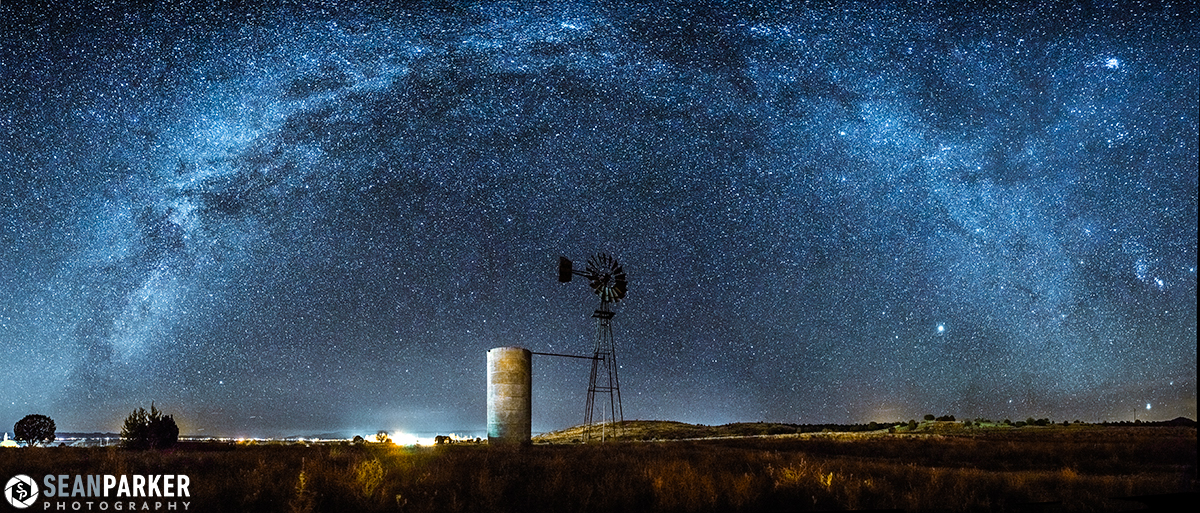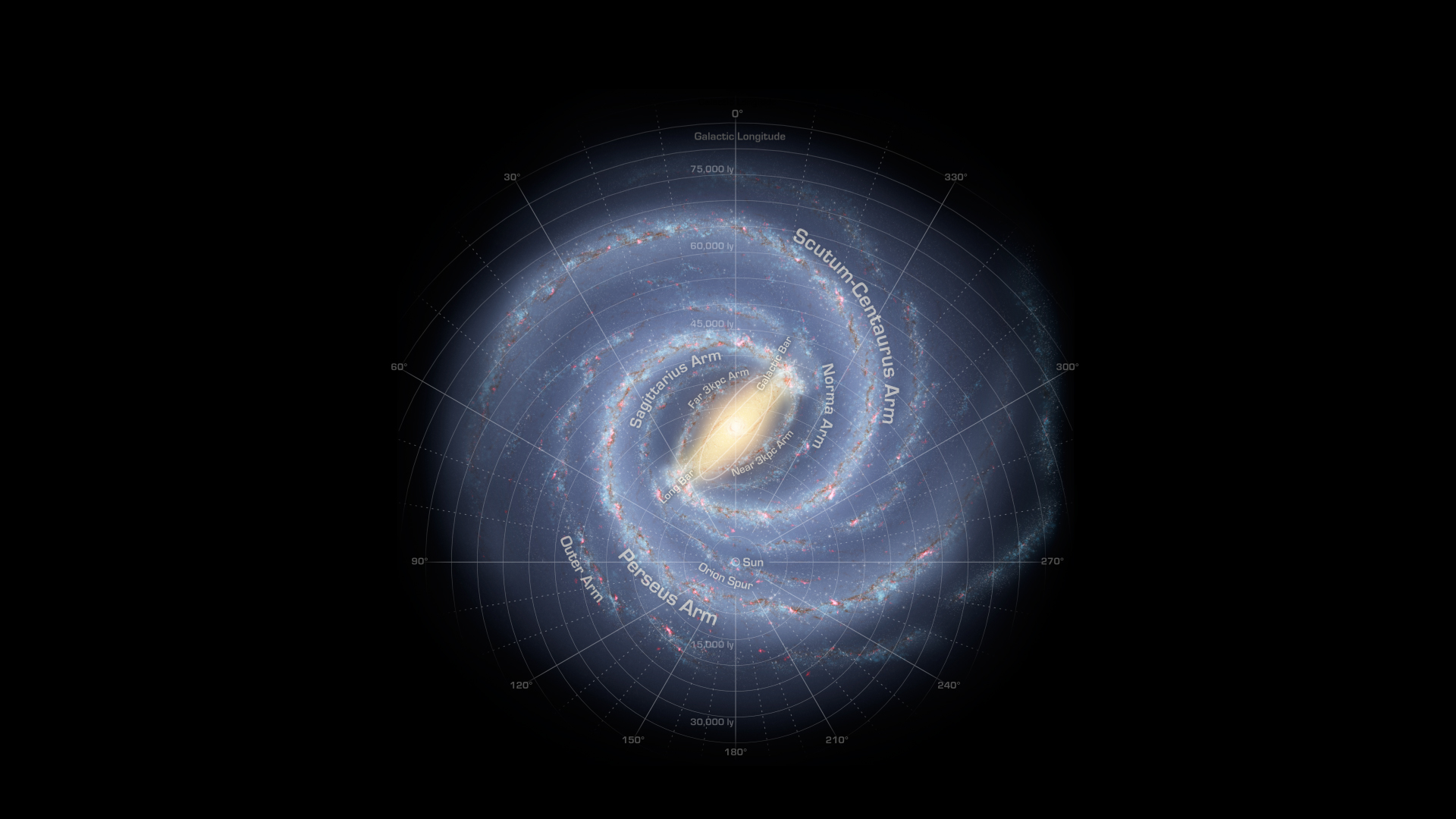Milky Way's Structure Mapped in Unprecedented Detail

Astronomers are one step closer to solving a longstanding mystery — just what our Milky Way galaxy looks like.
It may seem odd that a comprehensive understanding of the Milky Way's structure has so far eluded researchers. But it's tough to get a broad view of the galaxy from within.
"We are fairly confident that the Milky Way is a spiral galaxy, but we don't know much in detail. At the most basic level, we'd like to be able to make a map that would show in detail what it looks like," said Mark Reid of the Harvard-Smithsonian Center for Astrophysics, who led the new study. [Stunning Photos of Our Milky Way Galaxy (Gallery)]
Using the Very Long Baseline Array (VLBA), a system of 10 radio telescopes spanning the globe from Hawaii to New England to the Virgin Islands, and operated in Socorro, N.M., Reid’s team studied masers — naturally occurring sources of laser-like radio waves from clouds of gas near luminous stars — to map our galaxy in unprecedented detail.
"Mark Reid's paper presents the most precise data we have on the dynamics and structure of the Milky Way galaxy," said Harvard theorist Avi Loeb, who did not take part in the study.
Previous studies of the Milky Way's structure were limited to nearby stars or relied on inferring distances from measurements of the speed of gas clouds approaching or receding from us. But these techniques are not reliable enough to discern the finer points of the Milky Way’s structure. So Reid’s team decided to go one step further.

Using parallax
Get the Space.com Newsletter
Breaking space news, the latest updates on rocket launches, skywatching events and more!
The researchers first tried to get precise values of the Milky Way's most fundamental parameters — the distance to the galactic center and the speed with which our sun rotates around it. These parameters directly relate to the size and total mass of the Milky Way.
To do so, they measured parallax — an effect that reflects the apparent position of an object when viewed from two different vantage points. This is essentially the same technique used for surveying on Earth, only carried to extraordinary accuracy with the VLBA.
"Were the human eye to have this accuracy, one could see individual molecules in one's hand," Reid said.
Astronomers measure parallax by observing how stars appear to move back and forth as the Earth orbits the sun. Using this technique, Reid’s team first measured the position of a bright maser spot coming from a dense cloud surrounding a newly formed and massive star.
Six months later, the astronomers measured the position again, when the Earth had moved halfway around the sun.
"This gives us two different vantage points, and the bright spot will appear to have moved by a small angle on the sky between the two observations," said Reid.

Then they made a third measurement, when the Earth returned to its original position, to account for the motions of the sun and the target object. "Knowing the Earth-sun distance and the change in angle allows us to calculate the distance to the starby simple trigonometry," Reid said.
The results have been impressive. As Reid and his colleagues describe in the paper, published this month in The Astrophysical Journal, it has been possible to determine the location of bright young stars that trace spiral structures in our galaxy, and even to measure how tightly wound the Milky Way’s spiral arms are.
"A typical spiral arm starts near the center of the Milky Way and wraps around once before fading away for lack of material to form stars," Reid said.
But Loeb said that the most important results of the recent study were the much more accurate estimates of the distance to the galactic center and the circular rotation speed at the sun's location.
"These values are of fundamental importance to many other studies of the Milky Way," Loeb said.
Together with Gaia
Since the VLBA is in the Northern Hemisphere, it can only "see" about half of the Milky Way. So the next step is to take the same measurements in the Southern Hemisphere.
Once that’s done, Reid is confident that it should be possible to trace the Milky Way’s arms from their origin in the inner regions of the galaxy around to the outer parts.
His team’s ground-based observations will soon be greatly extended by the European Space Agency's Gaia spacecraft, which launched in December. Gaia aims to measure the distances to one billion stars by about 2020. [Photos: Gaia Spacecraft to Map Milky Way Galaxy]
"Gaia is an optical telescope and cannot peer through the dusty plane of the Milky Way, where spiral structures dominate, whereas the VLBA uses radio waves that are unaffected by dust," Reid said, "so the two approaches are quite complementary."
Instead of measuring parallax distances and mapping the Milky Way, an alternative would be to design a space probe that could move at nearly the speed of light, Reid said.
"In about 10,000 years it would get out of the Milky Way and could take a picture and send it back to us and we would know what the Milky Way looks like," he said. "Of course it would take another 10,000 years to transmit the image back to us. I'd like to know the answer sooner."
You can read the paper at the online preprint site ArXiv here: http://xxx.lanl.gov/abs/1401.5377
Follow Katia Moskvitch on Twitter @SciTech_Cat. Follow SPACE.com on Twitter @Spacedotcom. We're also on Facebook and Google+. Original article on Space.com.
Join our Space Forums to keep talking space on the latest missions, night sky and more! And if you have a news tip, correction or comment, let us know at: community@space.com.
Katia Moskvitch is a freelance science writer based in Switzerland currently serving as the head of communications for IBM Switzerland. She an award-winning writer who has covered astrophysics and other topics for Space.com, with her work also appearing in Quanta Magazine, Science, Wired, BBC News, Scientific American and The Economist among others.
In 2019, Katia was named European Science Journalist of the Year as well as British Science Journalist of the Year, and her book "Neutron Stars: The Quest to Understand the Zombies of the Cosmos" was published by Harvard University Press in September 2020. Katia holds a bachelor's degree in mechanical engineering from McGill University and master's degrees in journalism from the University of Western Ontario and in theoretical physics from King's College in London. She is fluent in English, French and Russian.









